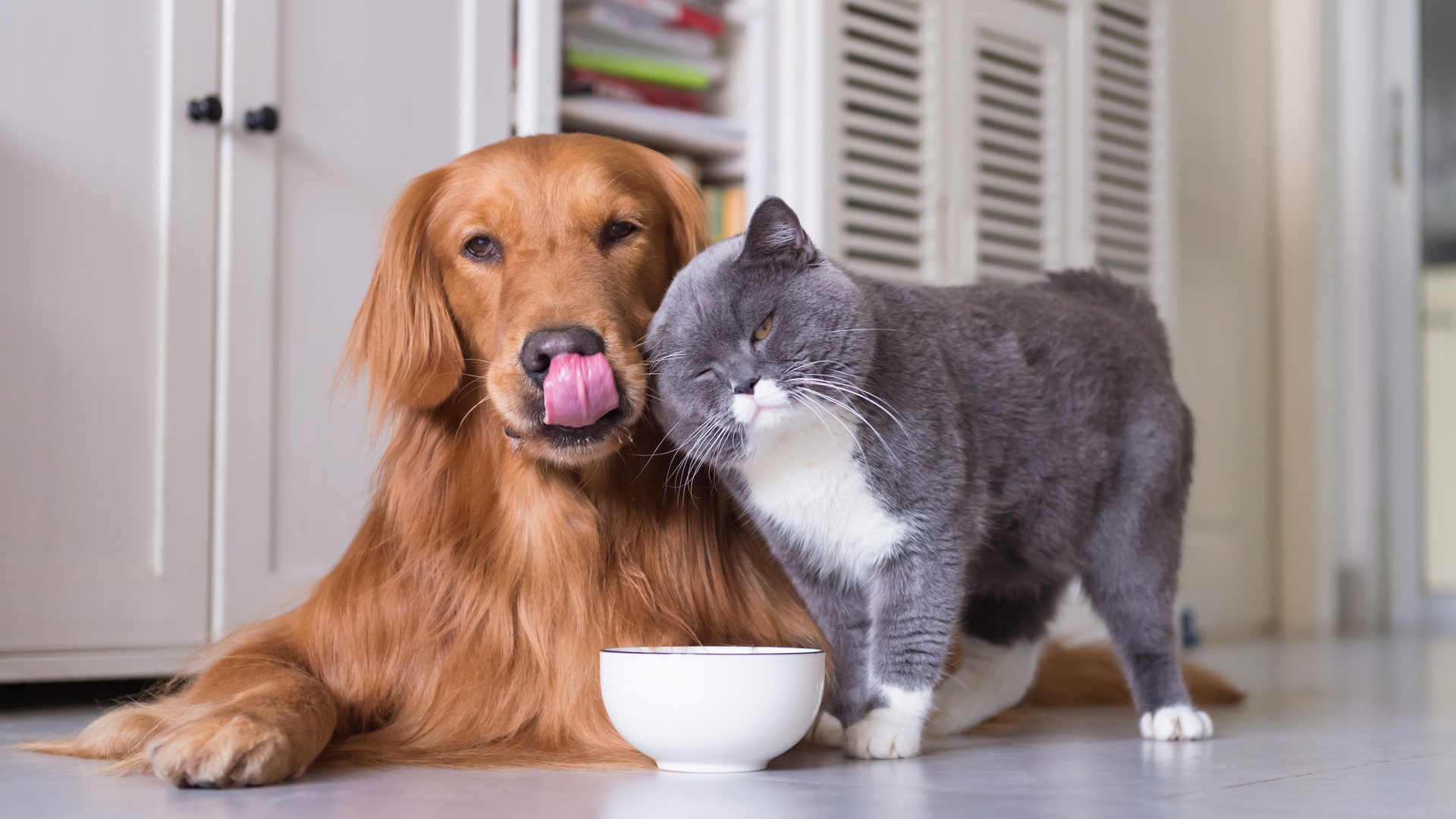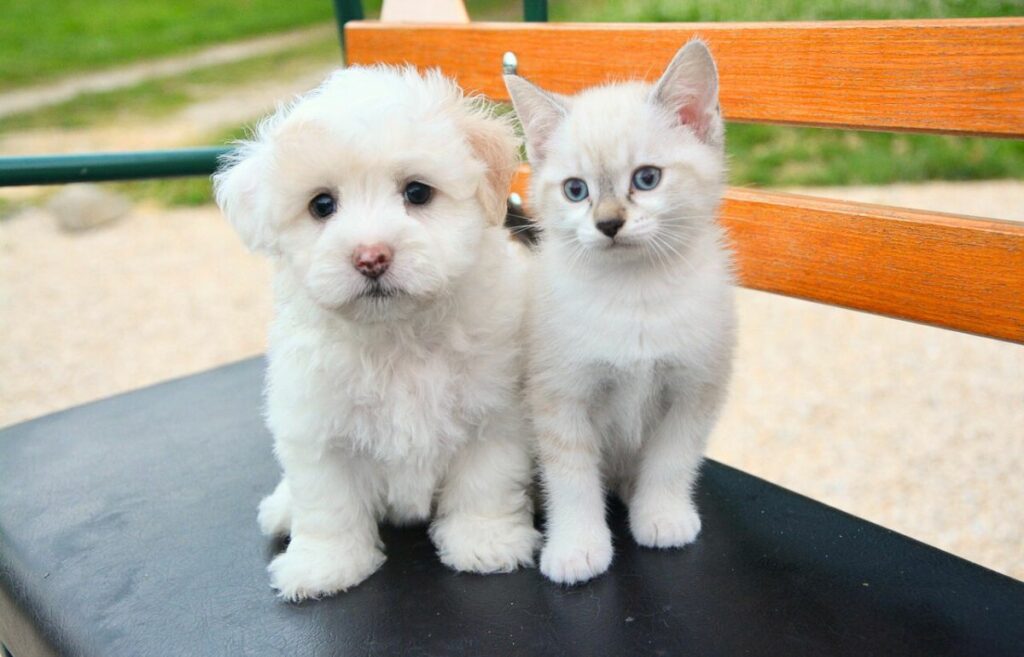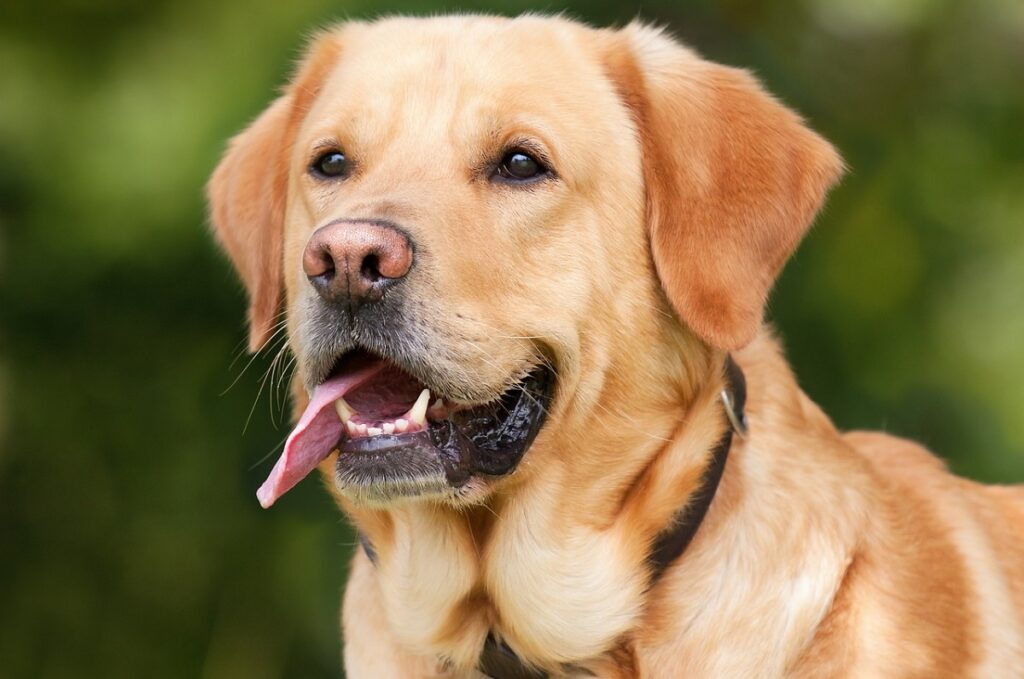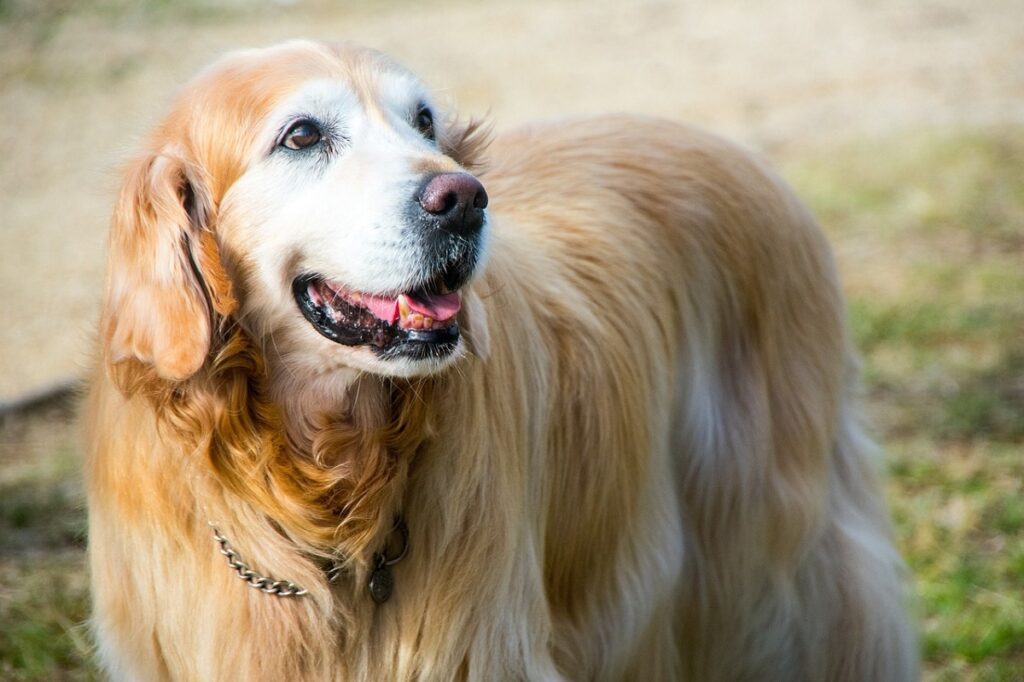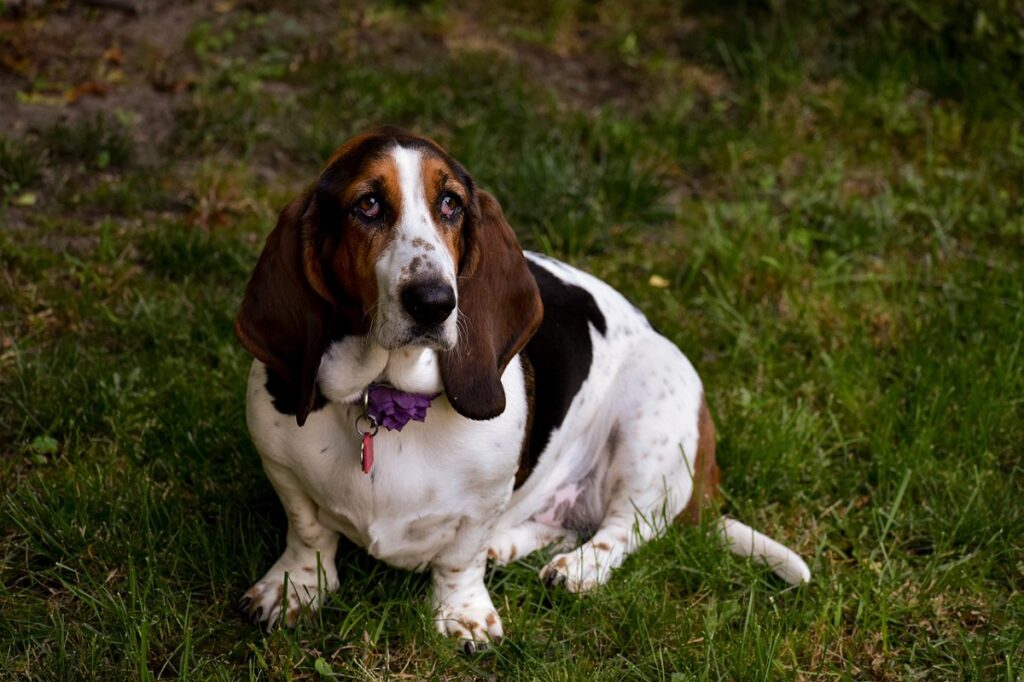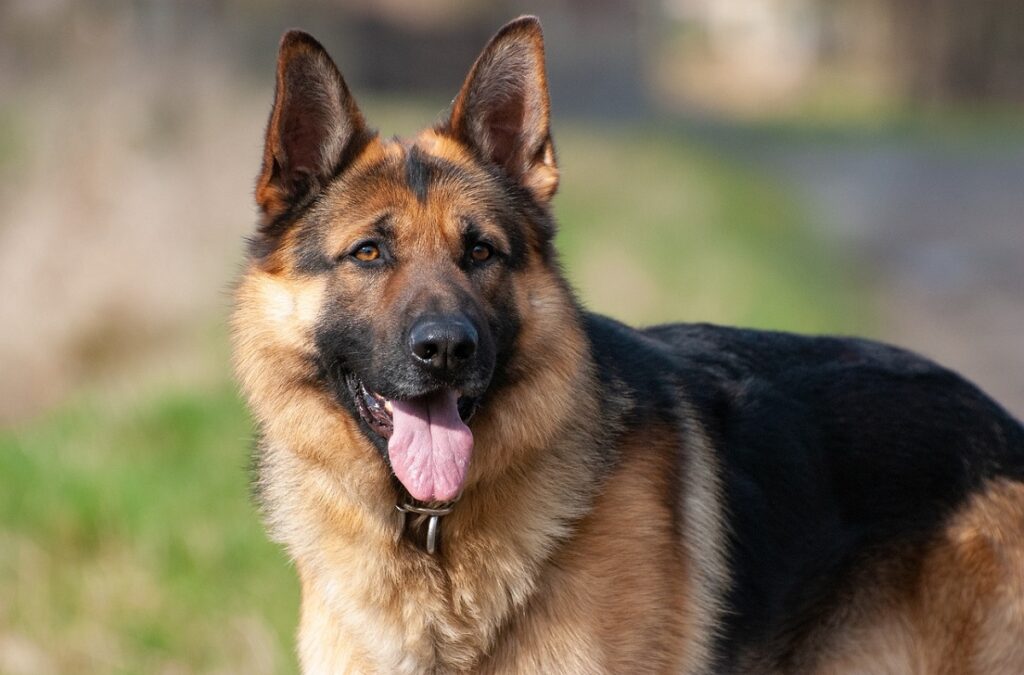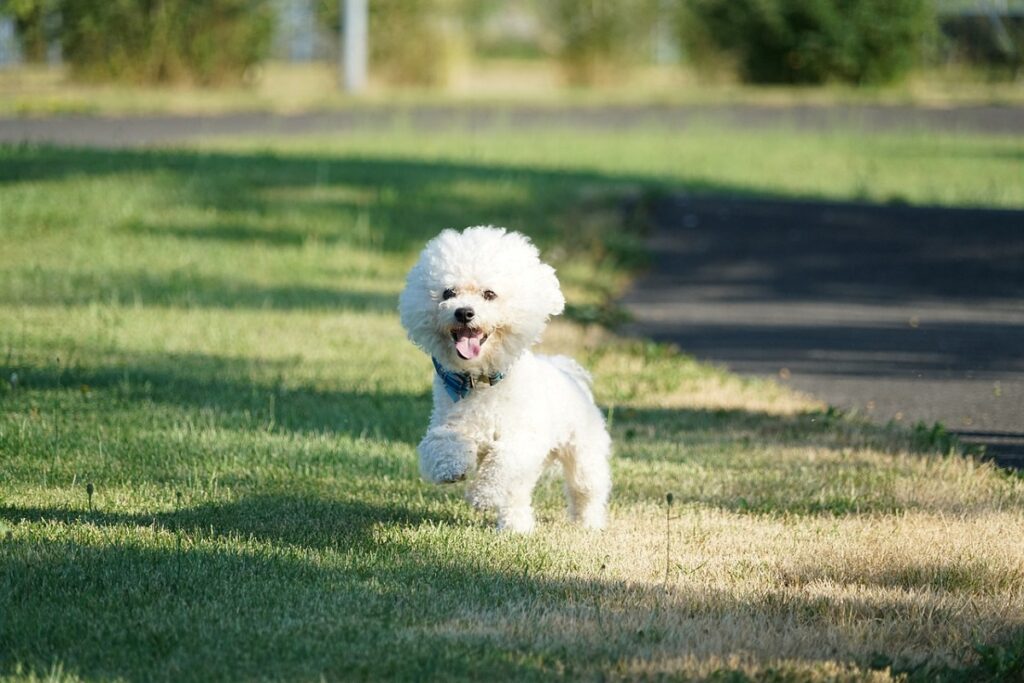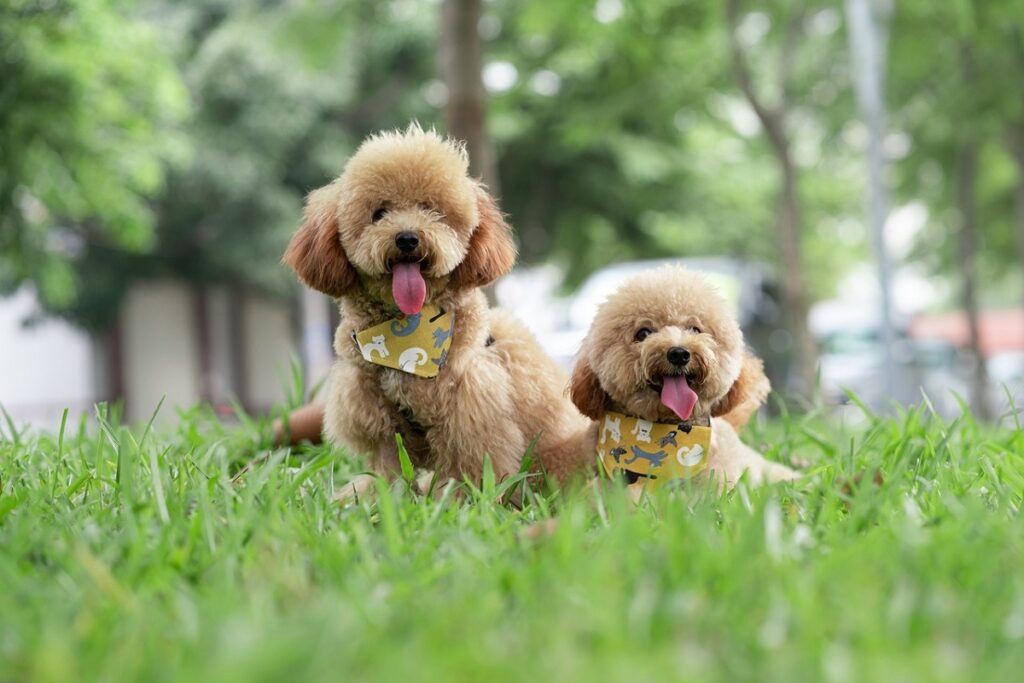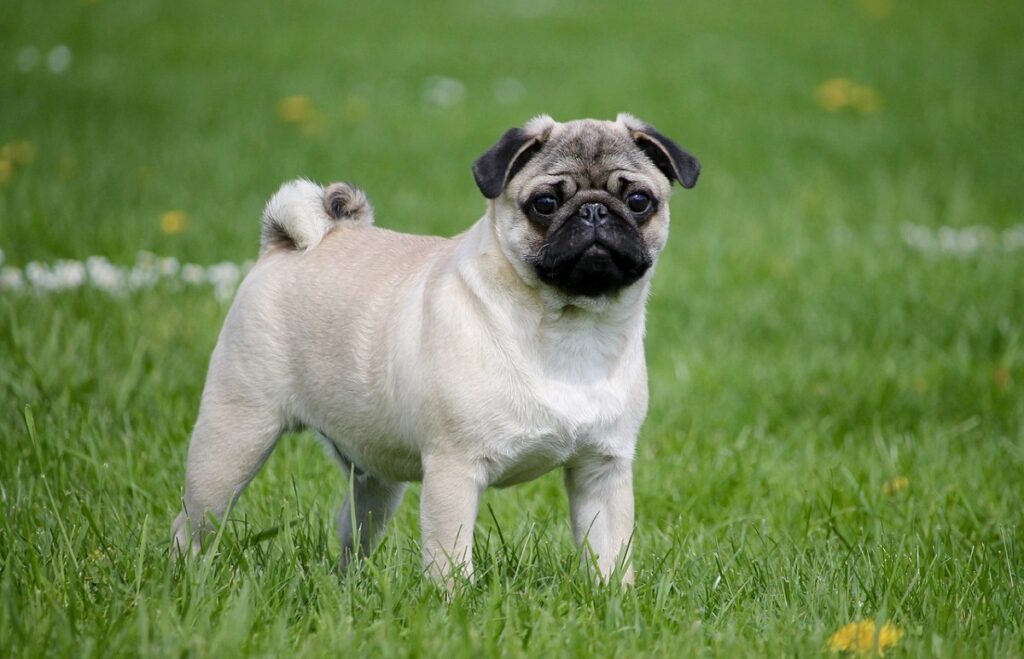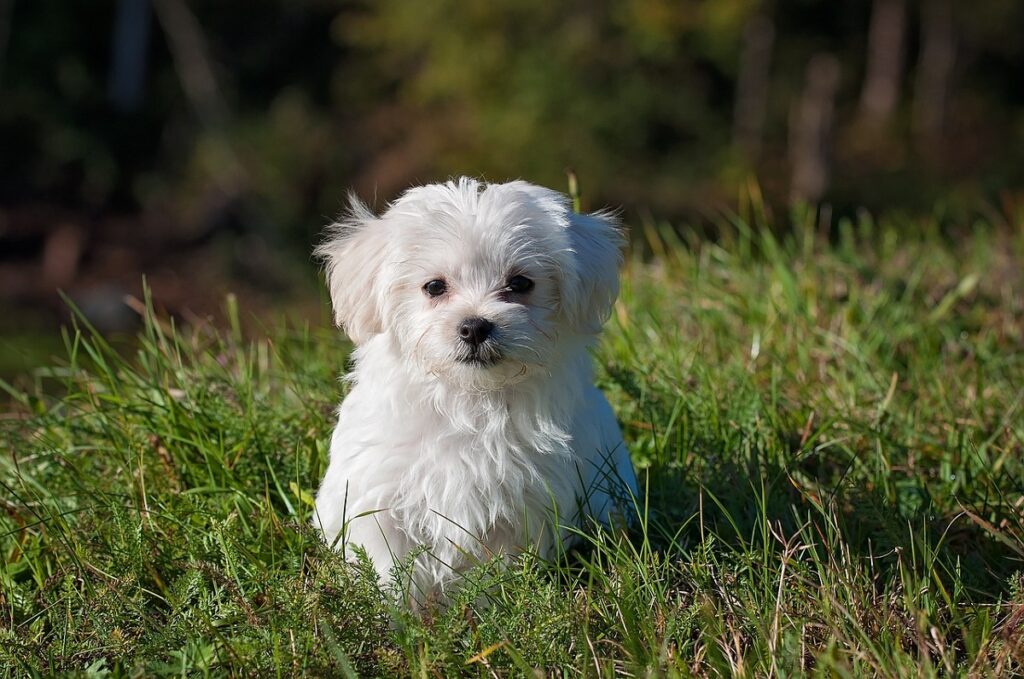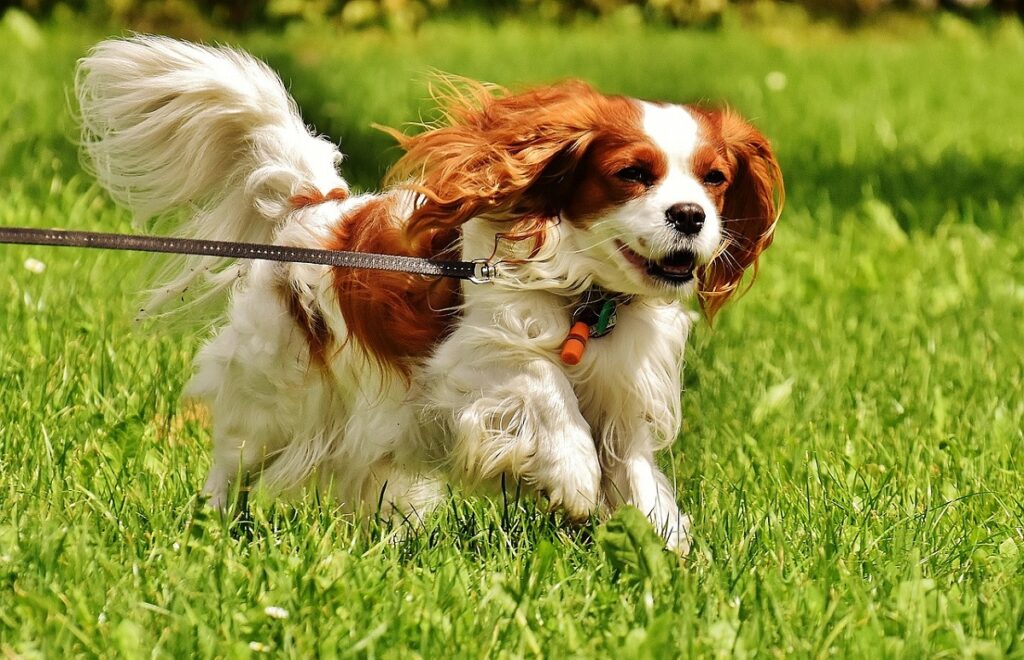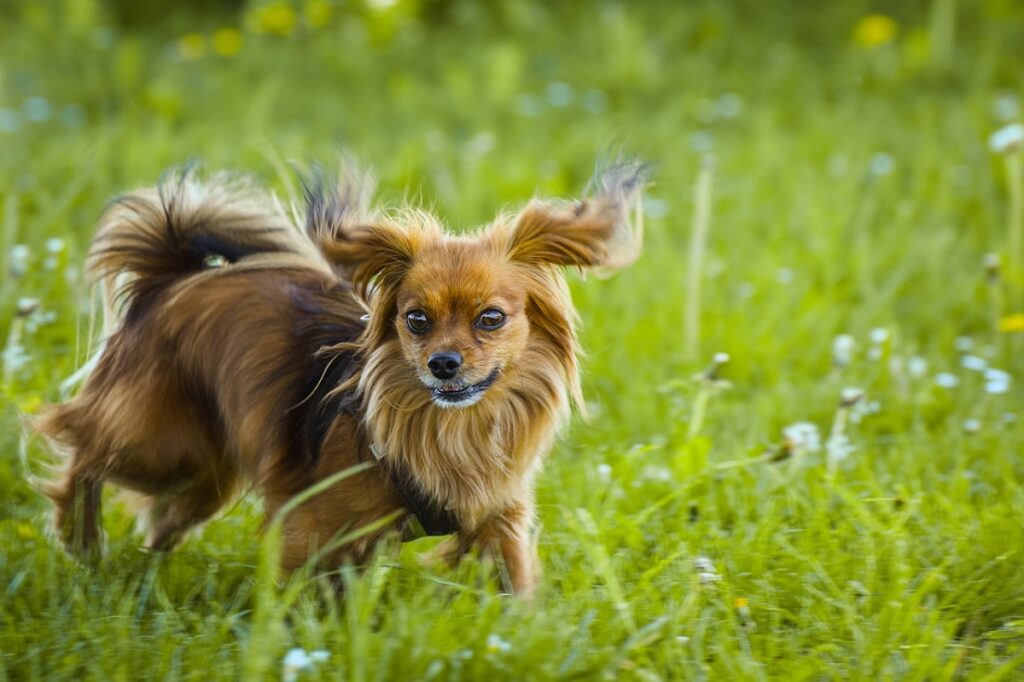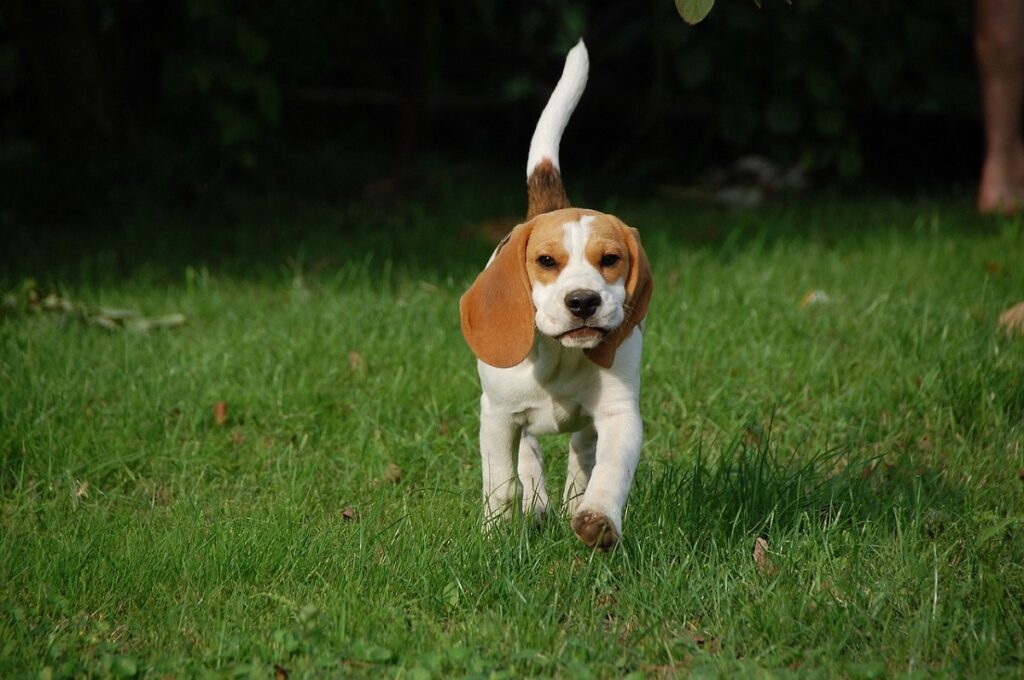Dogs and cats living together – it can be a purrfectly harmonious home or a chaotic chase scene. But some dog breeds are naturally more inclined towards feline friendship. Whether you’re a multi-pet household hoping for interspecies snuggles or considering adding a canine companion to your cat’s kingdom, discover 11 dog breeds known for their gentle nature and cat-friendly tendencies. From playful pups to laid-back loungers, find the perfect paw-tner to complete your furry family.
Let’s get certain facts out of the way: Any dog can seriously harm (including the worst) a cat. I’ve seen it with my own eyes up close and personal with breeds you would think are safe around cats. But there are some breeds, as a whole, that do better with cats than other breeds, like the Australian cattle dog or the Siberian husky.
Those are breeds with extremely high prey drives, and so have the instinct to chase smaller animals. We hope this list helps you if you’re concerned about introducing a dog breed into your “cat house,” as we know how important it is.
The good news is there are dogs that are good with cats, so you can make an informed decision to keep your kitty as safe as possible.
Understanding Dog Breed Groups
There are dog breeds that are selectively bred for traits, including even temperaments and gentle personalities, that tend to view cats as friends rather than lunch. Then there are some breeds bred for other purposes, like hunting individually and not in packs, that have a natural urge to chase smaller animals.
Dogs that are trained to hunt in packs depend on others to help them chase, for example, beagles and basset hounds. Then, some breeds are just physically too small to run quickly or overcome a cat like Bichon Frisés and toy poodles.
Canines that have a strong prey drive means they have the “inclination to seek out, chase and potentially capture animals seen as prey – usually smaller animals such as cats or rabbits,” according to Oakland Animal Services in CA.
If you must introduce the two different animals, begin with them in separate rooms. Both animals have incredible scent glands and will understand another animal exists. You can continue with having a barrier between them, like a tall baby gate or fence.
Then, watch the body language of the dog. If they stiffen, bark aggressively or even incessantly, or fixate on the cat, there is cause for concern. If that’s the case, a closer introduction wouldn’t be a smart choice.
If all goes well, and give it an ample amount of time, invest in a high perch for your cat to escape if he or she feels threatened.
If you’re at all timid or uncomfortable with initiating a meeting, it’s absolutely worth it to invest in a trainer for the first meeting. It could be a life-or-death decision. Cats are known for being reactive, physically and mentally, to stress, and nothing is more stressful for them than introducing a dog into your pack.
Always remember puppies that are well-socialized (have been around different animals, people, and places at a young age) are almost certain to be safe around cats. Hopefully, they’ve learned the difference between friend/pet and foe. It’s a bonus if your cat is a kitten.
A peaceful existence can be accomplished between the two animals and when it happens, it’s a beautiful thing to see.
Dogs That Are Good with Cats
So now we’ll begin to give you our best breed choices for cat-friendly dogs that are great with cats.
1. Labrador Retriever
Although this is generally a breed that doesn’t hunt in packs, they are bred to be gentle and easy-going as well as to be top hunters. Labs are bred to hunt ducks and waterfowl, although they also hunt small game. A cat/dog introduction, if the Lab is older, is certainly necessary (as with all other breeds).
Labs do have a strong prey drive, but it’s not a top characteristic for breeders. They were developed to fetch and retrieve and have “soft mouths,” so hunting isn’t the primary goal. Labrador retrievers also want to please their guardians, and if training communicates that the cat is off limits, they can understand better than other breeds.
With proper oversight and a lot of patience, this matchup can be one of the best.
2. Golden Retriever
The golden retriever was bred to be a bird dog (gun dog) and, like Labs, is a people-pleaser and unlikely to attack cats. Their gentle demeanors and easy companionship are top-of-the-list goals, and this fares well for kitties.
Though they do like to fetch, behaving well around cats is an entirely different activity and is usually seen as such. Goldens are famously gentle and loving and can love on cats with the best of them.
They’re excellent with strangers and adapt well to any environment. These are good clues as to how they can get along with cats and other dogs. In 2022, golden retrievers were listed as #3 on the list of most popular dog breeds by the American Kennel Club (AKC) for good reason. They are one of the best dogs to have around your feline companion.
3. Basset Hound
Pack animal here… The Basset hound is bred to get along with other animals since they need to hunt cohesively. They’re expected to work as a team and therefore, tend to show patience with other animals in the home. They actually don’t enjoy being alone for long periods.
This breed is highly docile and friendly which makes for the perfect combination for them to meet new animals. Also, as slower-moving dogs with short legs, they’re less likely to intimidate a cat as much as those who are quick or have sporadic movements.
Bassets will tend to be more aloof with felines if a cat is easily spooked.
You may have more difficulty if you don’t enjoy the bay (howl) of a Basset more than you will have if they’re around cats. But hey, it’s a beautiful sound, and you knew that was ahead of you, right?
4. German Shepherd
German shepherd…Yikes! But before you write off the possibility of having a German shepherd in your home due to your cat, let us give you the facts. This breed is highly protective of those in the household which would include the family cat.
They’re bred to herd and to protect, for intelligence, self-confidence, and versatility. This breed also serves as:
- War dogs
- Law enforcement dogs
- Seeing eye dogs/Service
- Scent dogs (bombs, drugs, etc.)
- Companion animals
And more.
German shepherds want to please their guardians and listen to commands closely. If you’re confident in your training abilities and follow the suggestions listed above, you should have a peaceful pack.
5. Bichon Frisé
The Bichon Frise, at 12-18 pounds and 9.5”-11.5” tall, isn’t likely to turn into Cujo when moving in with the family cat. They may even be smaller than Fluffy. You really might need to watch the cat just as closely as the dog since intact paws/claws can do some real damage.
Bred to be a companion animal, they’re great with families, children, strangers, and dogs.
On the flip side, just because they’re small doesn’t mean they don’t need to be trained and socialized early just like a larger breed. They often get by with a lot of bad behavior; they’re fearless little dogs due to guardians who think they’re too small to cause too much harm. Nip it in the bud.
6. Toy poodle
Standard poodles, bred to be water retrievers, are one of the most intelligent dog breeds in the world. Miniature and toy poodles don’t fall far from that tree, except toys were bred for companionship.
That said, toy poodles tend to be highly playful and can actually frighten a cat with their antics. Yes, this is from a 4”-6” tall dog and less than 10 pounds. But generally, they’ll learn quickly that a cat may not welcome their energy and will keep it aimed at their humans.
If trained well and early, they adore learning things that will please their guardians. It’s why they excel at agility and obedience competitions. Don’t put it past Felix to try to bully this little one, so don’t forget it’s important to train your cat, too.
7. Pug
An ancient breed, pugs were bred to be companions of royalty in China. In the AKC’s “Toy” group, they’re lovers, not fighters.
They do best with reward-based training (positive reinforcement) and from someone who is in control but not with an iron fist. They’re loving, mischievous at times and wonderful with children, so look for them to be spunky and relatively easy to train.
The pug is continuously high on the AKC’s list of Most Popular Dog Breeds, and an interesting fact: Napoleon’s wife used this breed to carry messages during her imprisonment.
Important – Pugs are brachycephalic, like French bulldogs, which means they have a more difficult time breathing than other dog breeds. They don’t tolerate heat or humidity well, so if you have an indoor/outdoor cat, make sure both animals are inside when you train.
8. Maltese
This breed can develop separation anxiety if left for hours at a time, so try not to let it get to that point. Misplaced anxiety may be aimed at your cat.
Other than this, the Maltese, a small white breed, makes for a wonderful animal that can co-exist with cats. They’re under 7 pounds, so don’t forget to ensure their safety as well. This breed does well with human family members but needs training in the “other animal” portion of your family.
They’re in the “Toy” group (AKC) and were bred to be companion animals. No mouse chasing here. Aggression or a high prey drive isn’t really in their personalities; however, being vocal watchdogs is.
9. Cavalier King Charles Spaniels
This cat-friendly dog gets along with everyone and is hard-pressed to be nasty or aggressive towards a man or beast. They do have a prey drive, like other spaniels, so hunting games like hiding a beloved stuffed animal can satisfy that need.
Be sure to take them on daily walks and even canine sports to drain their energy. (In a larger area, you could even prepare a trail for them to track their “prey.”)
Gentle, loving, and friendly, they appear to be smiling when panting. Be aware they can also suffer from brachycephaly due to their flatter faces. The Cavalier was named after King Charles I of Britain.
10. Papillon
Although this “butterfly-winged ear” breed is highly affectionate and intelligent, they also bark a lot and have high energy levels. This is remedied by daily walks and playful romps in the backyard.
There are two varieties of Papillons:
- Papillon (meaning “butterfly” in French with erect ears)
- Phalène (meaning “moth-eared” in French with drop ears)
Although they were bred to be companions, they’re descended from sporting dogs, hence the high energy level. This is a breed that will become your cat’s best friend if introduced and trained correctly.
11. Beagle
I think a beagle could get along with a fire hydrant. Well, despite the obvious disrespect for them. Cats and beagles are known to become fast friends, and that’s understandable due to the easygoing nature of the breed.
They’re in the “Hound” group (AKC) and do have a nose for hunting, but they generally hunt in packs and rely on each other. This trusting relationship can show itself in family relationships, so take advantage of it.
“Adorable” should be their middle name, and these cuties need to run. They are happiest and healthiest with at least an hour of exercise daily.
Consider Your Cat As Well!
The introduction of these two animals can cause concern to your cat in the form of:
- Hissing with flattened ears and standing their ground
- Escaping
- Hiding for long or short periods (And as you probably know, they do this quite well.)
- Not eating
- Aggressiveness
Cats share 95% of their DNA with tigers, so they’re accustomed to being on the hunt. Due to their small stature, they’re also prepared to be hunted.
Faced with a dog, or sometimes any other animal, they’re most likely going to be cautious and maybe even anxious. There are those cats who will meet your dog and immediately go in for a snuggle, but you can’t depend on it.
Give them the space they need; don’t close off rooms so they can work it out on their own. They’ll smell that the dog is probably not going to leave, and their curiosity will most likely get the best of them.
If both the dog and the cat seem to have no trauma-related behavior happening, you can continue facilitating the meeting.
I’ve seen cats hide for several weeks, so be prepared to see less of your cat than usual. Be sure to keep food separate and maybe even more than one cat box if they’re hiding. Watch your cat’s body language. Sometimes it’s that simple. If they look frightened or their hair is standing up, never force the issue. Give it more time.
Ideally, you want a peaceful existence with both canine and feline, so work on their timeline, not yours.
FAQs
What Kind of Dog Should I Get if I Have Cats?
- Labrador retriever
- Golden retriever
- Basset hound
- Pug
And there are more dog breeds as well.
Can Dogs Be Trusted With Cats?
Without proper training, no. With the right training and especially if they’ve always been in the same family, yes.
What Is the Most Dog-Friendly Cat Breed?
Abyssinian, ragdoll, Birmin, and Maine coon cat breeds can generally get along well with dogs. It does depend on each animal’s background, including history and any previous incidents with the other animal.
Final Thoughts
You’ve seen our list of dogs that are good with cats and have basic knowledge of how to make positive relationships between them happen. If you’re going to adopt a cat or a dog, which we strongly suggest over buying one, make sure to ask about the animal’s background. It makes a big difference if an animal came from the streets or from a loving home with a cat or a dog.
We’ve done our best to educate you, and now it’s time to move ahead so Bruno and Garfield can be like two peas in a pod. Or at least animal buddies.
Ultimately, choosing a dog breed known for cat-friendliness increases the chances of a harmonious multi-pet household. While breed tendencies offer a starting point, individual temperament, early socialization, and careful introductions remain crucial. Patience and proper training are key to fostering a positive relationship between dogs and cats, regardless of breed. Remember that every animal is unique, and a seemingly cat-friendly breed can still exhibit individual differences. Responsible pet ownership prioritizes the well-being of all animals in the home and commits to creating a safe and loving environment for both dogs and cats to thrive.

